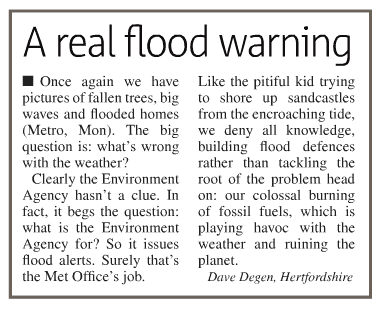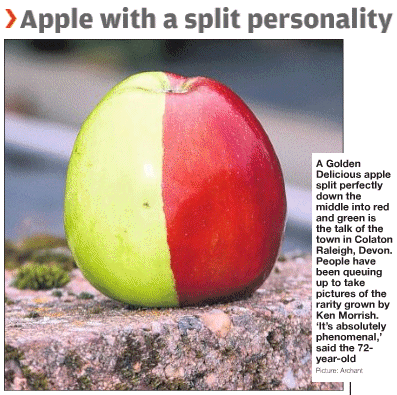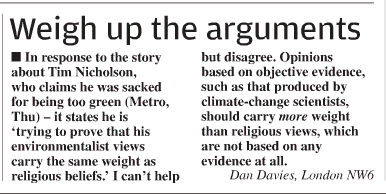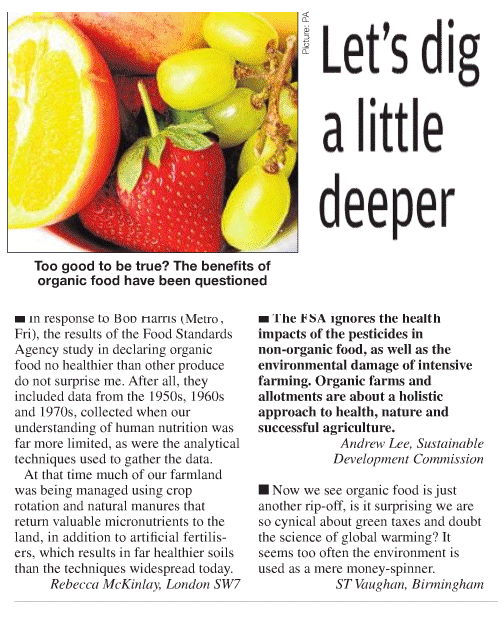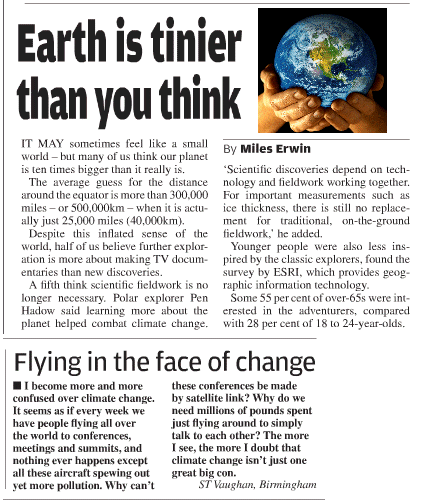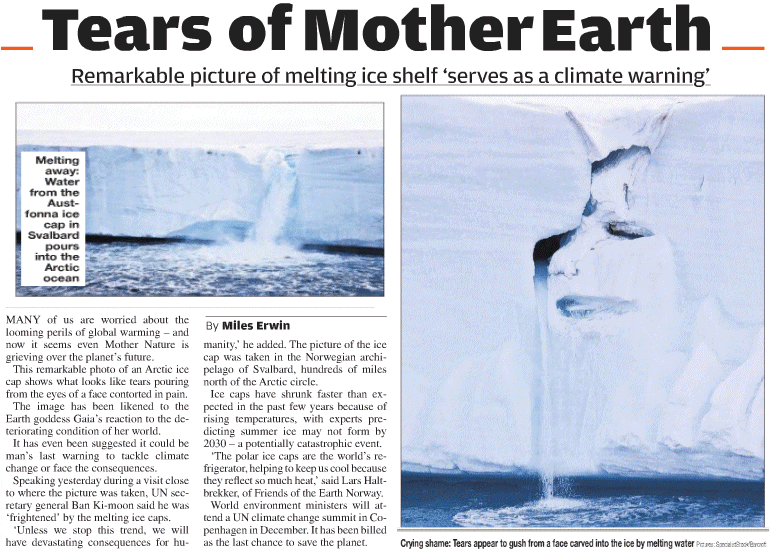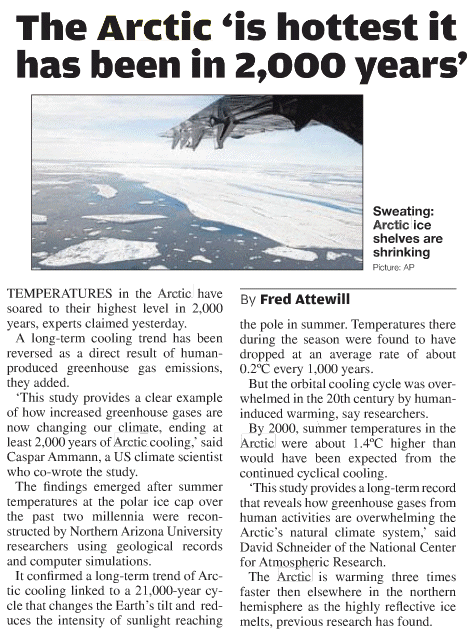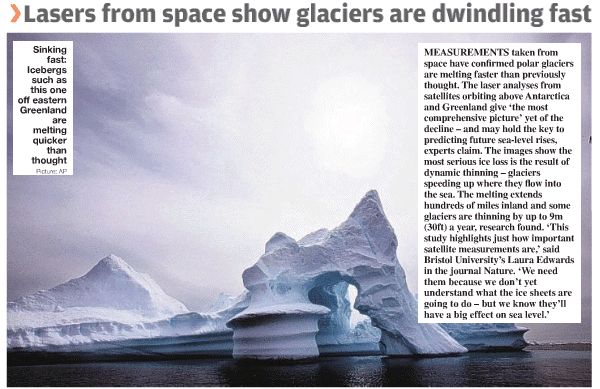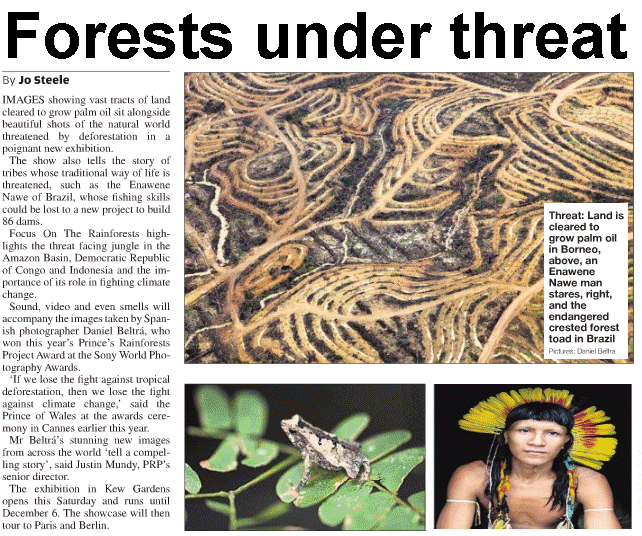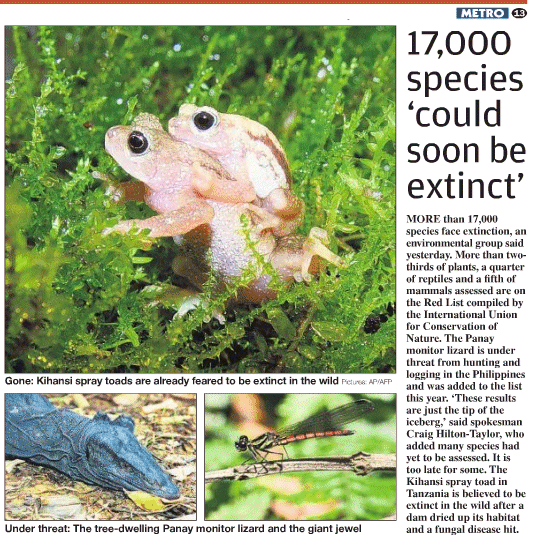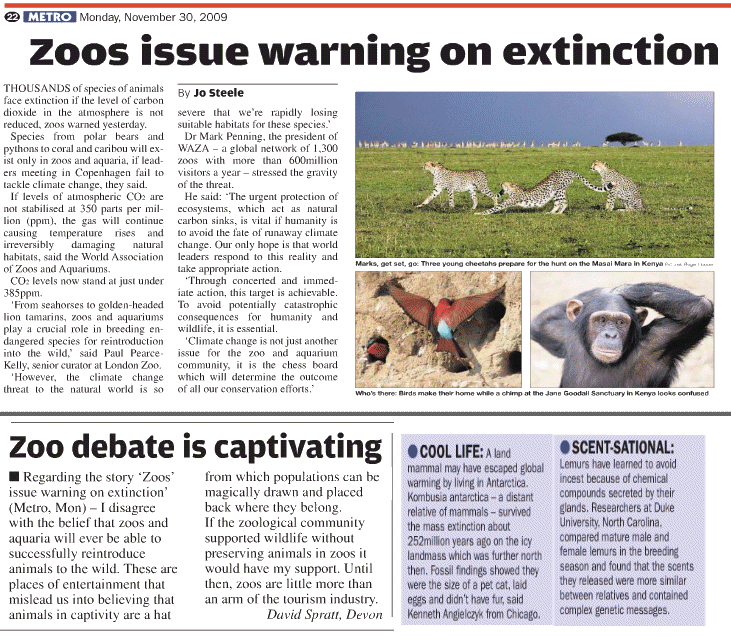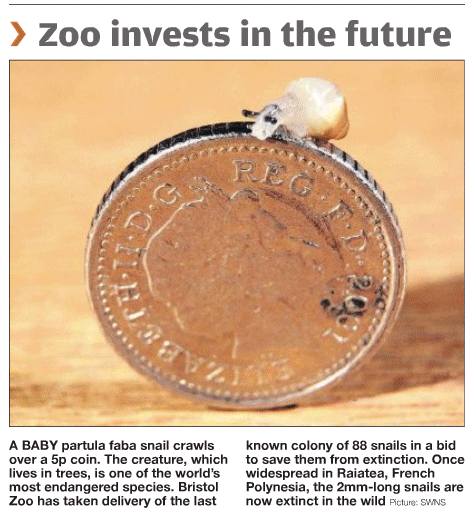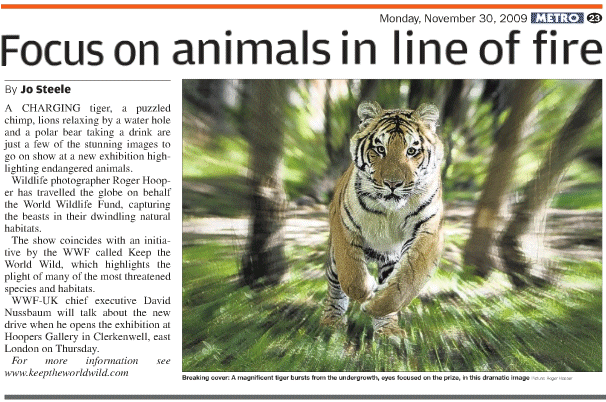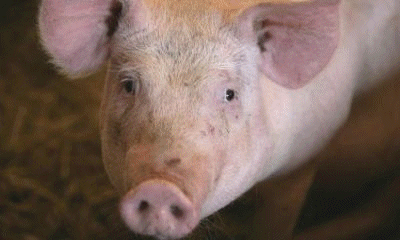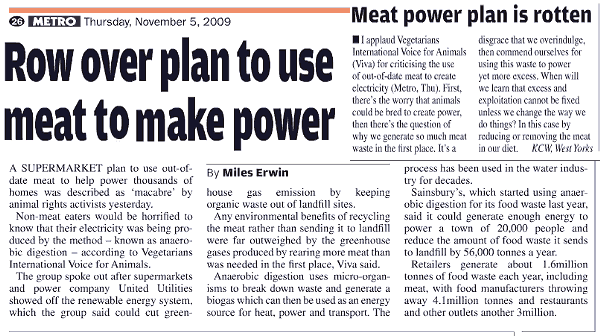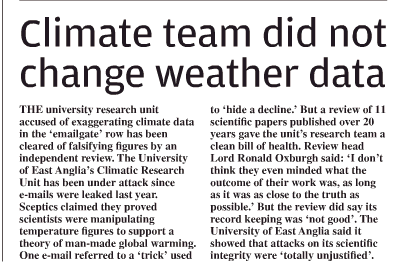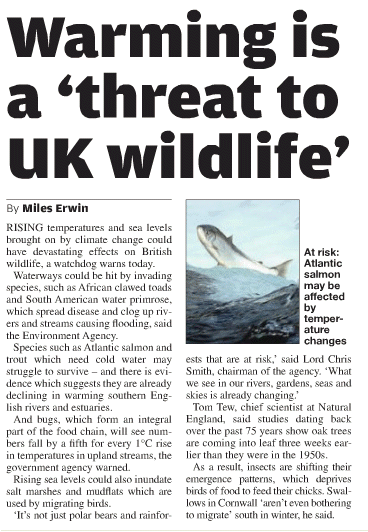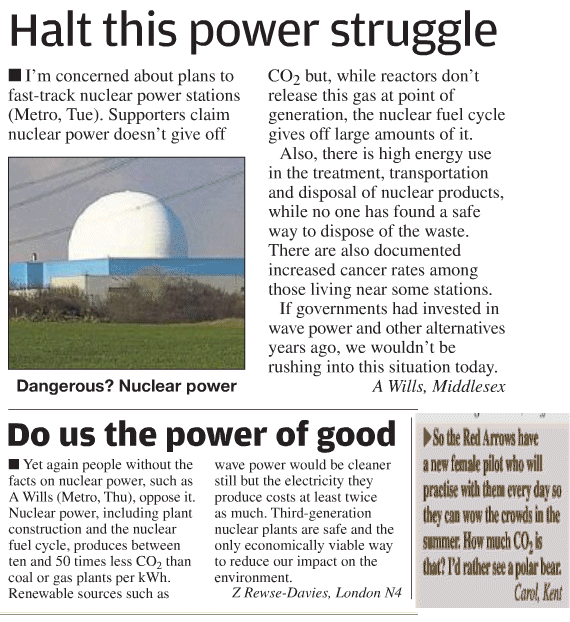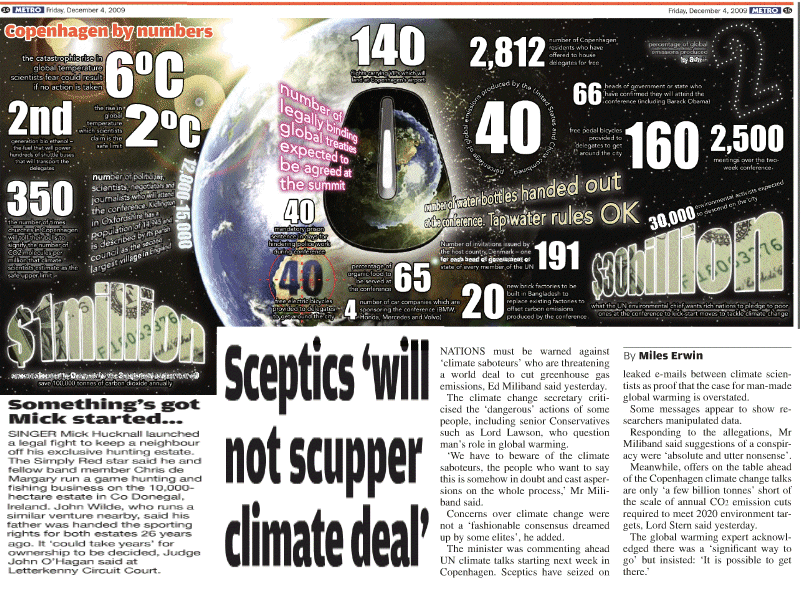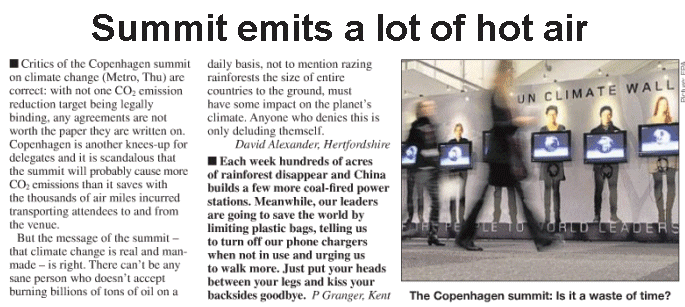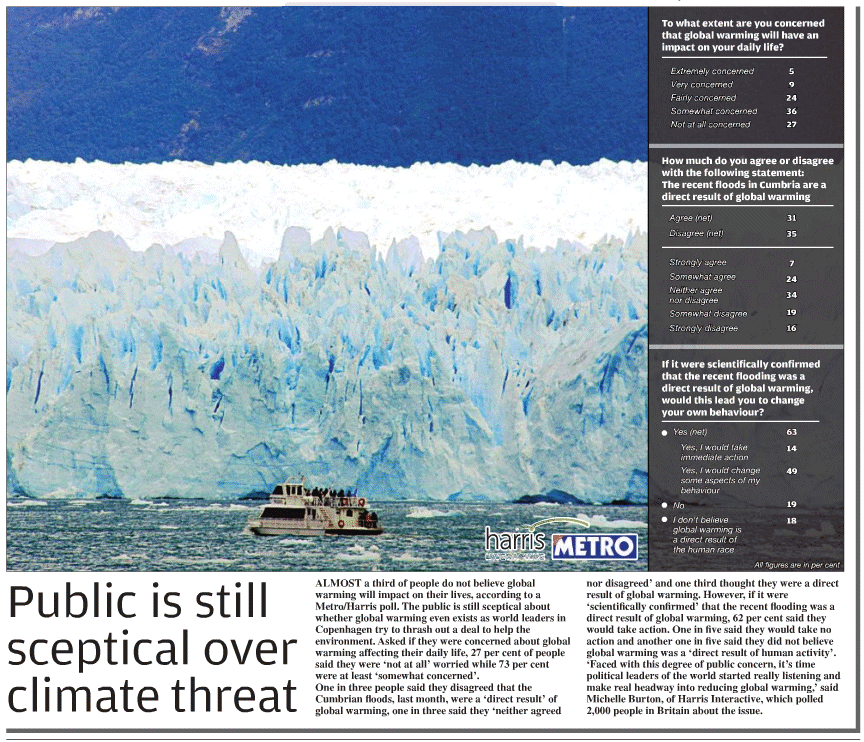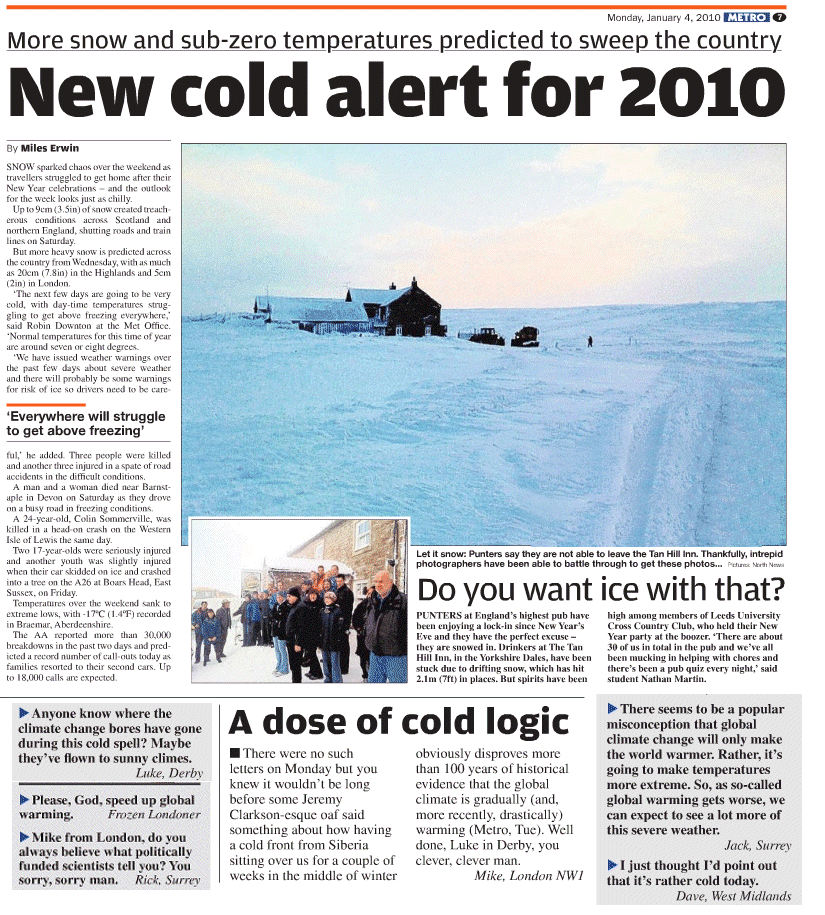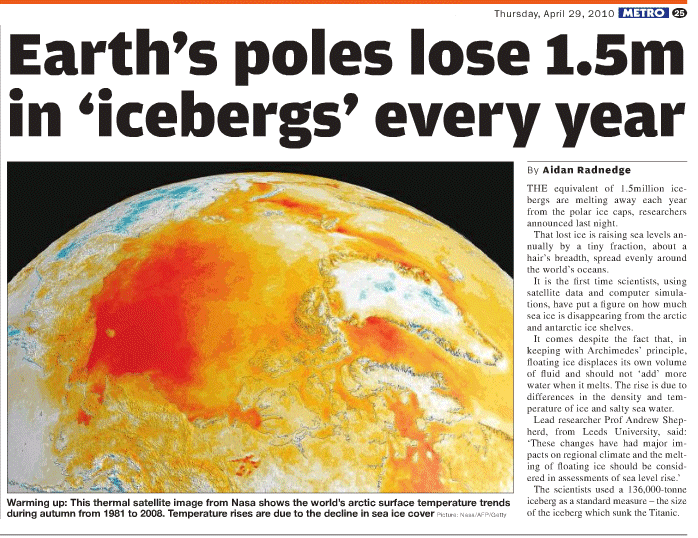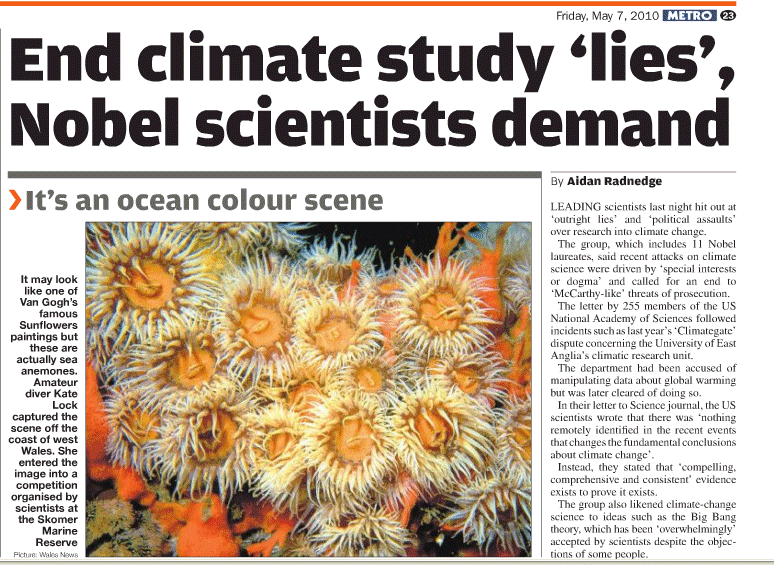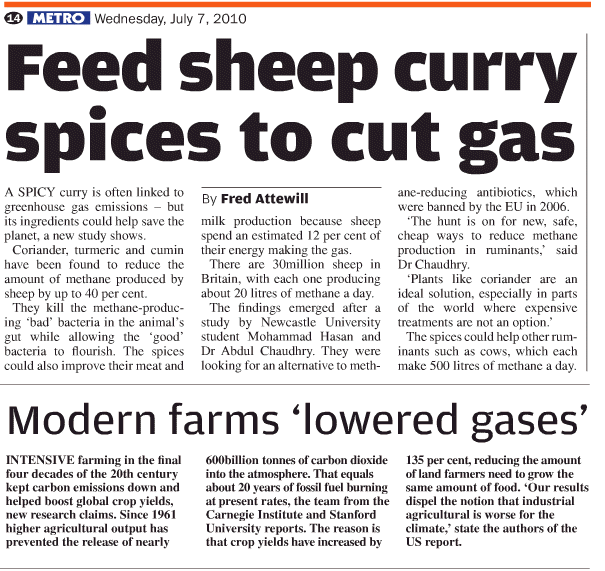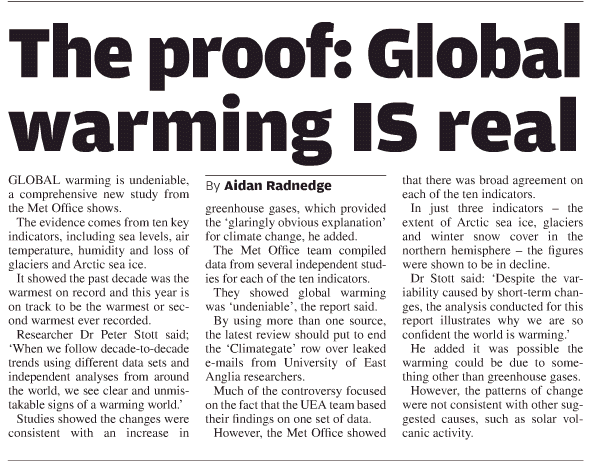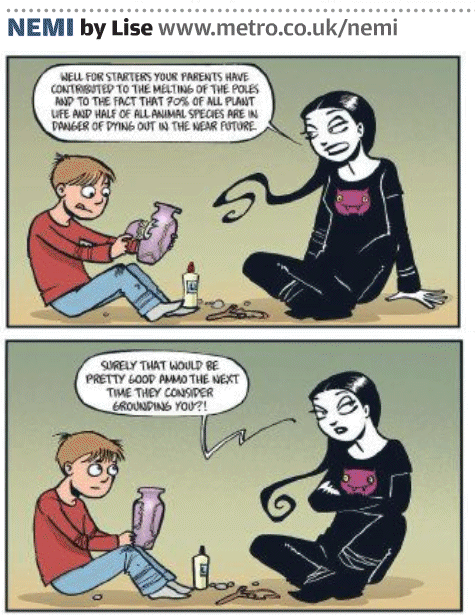NEWS
Green Guru says 'we are past the point of no return'
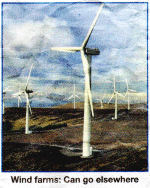 |
Blown out of proportion?
I am glad Metro considers renewable energy front-page news (Metro, Tue) but
I would disagree that the ruling against the Lewis wind farm is a 'huge blow'
for green energy. It is a victory for common sense and the protection of
our natural heritage. The Lewis peatlands are one of a comparatively small
number of sites in Britain that are protected by European law because they
are considered so important for their birdlife. Given that there are still
large parts of the country where wind farms can be viably sited, it doesn't
seem unreasonable to require energy companies to go elsewhere. The same cannot
be expected from the wildlife of the Lewis peatlands. |
| I can't understand why 11,000 people complained about
a wind farm - would a nuclear power station be more visually appealing? How
can we, the windiest country in the EU, fail to do what our European counterparts
have done; some producing as much as 30 per cent of their electricity by
wind. We could produce 100 per cent of our needs by wind farms yet they hardly
get built because people don't want their views spoiled. This is about our
environment, our future and that of our children. If the government wanted
to build windmills next to me, I would welcome it .Why? Because there are
more important things than the view from my house. Joshua Martin, NorthYorkshire
When climate change has destroyed the habitats of the rare birds living on
the Lewis peatlands, what excuse for not building wind generators is Moorlands
Without Turbines going to come up with then? |
|
LAKES PLEA
Readers who love Lakeland should be alerted to
the threat of windfarms. They ruin the beauty of the uplands.
I invite readers who are outraged by these proposals to write to Country
Guardian,PO Box 229,Warrington WA1 1DP,a group set up to fight these
obscenities. |
It's safer energy
In response to J Lythgoe's condemnation of windfarms (Postbag Mar18),only
through utilisation of renewable power sources such as wind,solar,and
tidal energy,will global
warming be slowed. Not everyone finds windfarms offensive to look at.
Surely,there is beauty in the marriage of natural elemental power and
human technology for such positive ends. |
Blowing up a storm
I was the amazed to read (Postbag,Mar18) that there is a group
set up to fight the construction of windfarms. Any kind of construction in
a rural area is a frightening prospect, but where does the reader who complained
expect to get electricity in the coming century
- nuclear
power stations? |
The rain in vain
|
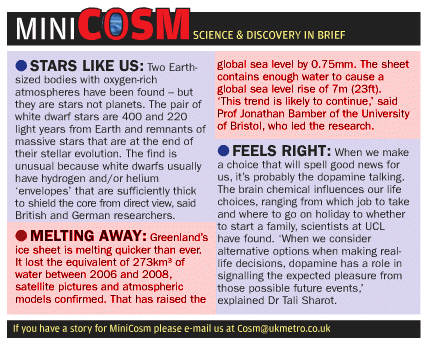
People will go veggie to save planet
Nicholas Stern said: "I think that once people understand the great risks
that climate change poses, they will naturally want to choose products and
services that cause little or no emissions of greenhouse gases, which means
'low-carbon consumption'. |
| I read with interest Andy Coghlan's article on recent research findings
about the pain experienced by animals when slaughtered without stunning (17
October, p 11).
I head a project in Europe called Dialrel, which aims to improve welfare at slaughter by finding more common ground between what science tells us about slaughter and what procedures are found acceptable by religious traditions. We know that both Muslim and Jewish authorities are concerned about the welfare of animals at the time of slaughter; however many of them interpret the practice of stunning as incompatible with their religion. Reaching compromise is complex. Wide variations in slaughtering practice already exist within faiths: for example, the majority of halal food in the UK is obtained from animals that have been stunned before slaughter. As part of the Dialrel project, we have conducted spot visits in slaughterhouses in several countries in the European Union and we have discovered that there are more animals slaughtered according to the religious rules than are necessary to meet the demands of the halal and kosher markets. Moreover, both conventional and religious practices of slaughter could be improved. If stunning is not performed according to the suggested rules or the equipment is not in optimal condition, it can be ineffective. Animals can experience high levels of stress before stunning and slaughtering if they are not handled properly. We are planning a scientific workshop for early next year, with veterinarians and animal scientists from the Dialrel project and experts from both the halal and shechita certifying bodies, to discuss possible strategies for improving all the practices of slaughter. We hope that new practices, such as post-cut stunning, which is already implemented in Australia, will be adopted. We believe that this intervention would help to improve the welfare of animals in the case of religious slaughter. From Shuja Shafi, Muslim Council of Britain
Andy Coghlan appears to have made up his mind that stunning is the solution to the welfare problems associated with the slaughter of animals, yet he ignores some important facts that are published in the very journal volume he cites. Troy Gibson and colleagues showed in a carefully controlled experiment that in two out of seven calves stunned, the process was ineffective, as demonstrated by periods of EEG activity - an indicator of cortical function (New Zealand Veterinary Journal, vol 57, p 96). Thus they demonstrated that stunning did not render those two calves completely insensible to any pain and distress. This failure to render the two calves insensible to pain was attributed to either incorrect positioning of the stunner on the animals' heads, a deflected shot, or incorrect function of the stunner itself. It is well recognised that mis-stuns occur in practice, and that each instance compromises animal welfare. A frequency of up to 5 per cent is considered satisfactory, meaning that even if as many as 1 in 20 animals are mis-stunned, the slaughterhouse is still considered to be practising good animal welfare. Even working on anaesthetised animals that are further immobilised by a purpose-designed head frame, Gibson's work showed an almost 30 per cent incidence of mis-stuns. This must surely raise concerns about the practicality of achieving the required level of accuracy and precision in a commercial environment. The notion that stunning solves all animal welfare problems around slaughter is simply not true; stunning often creates more problems than it solves. A holistic approach is essential for realising the high standards of animal welfare we all endeavour to achieve. The UK's Department for Environment, Food and Rural Affairs should, along with other relevant agencies such as the Food Standards Agency, evaluate this evidence objectively, understanding both the strengths and severe limitations of the work. London, UK From Daniel Weisman On reading the first paragraph of your editorial on the pain response in animals undergoing religious slaughter, I systematically, mentally replaced the words "slaughterhouses" with "fields", and "religion" with "sport". Doing so, I came to a more realistic view of human cruelty. If you want to be self-righteous about animals suffering pain, as in your editorial, maybe you should campaign for the immediate banning of all sport shooting, thus saving pheasants, grouse, rabbits and stags from being blown apart for fun. London, UK Dialrel
|
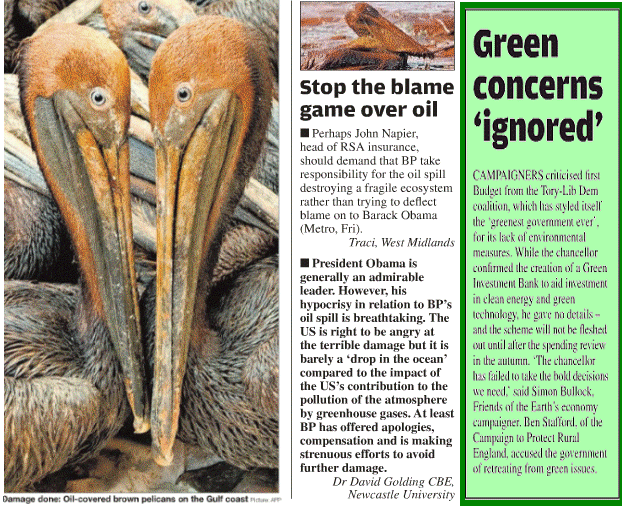
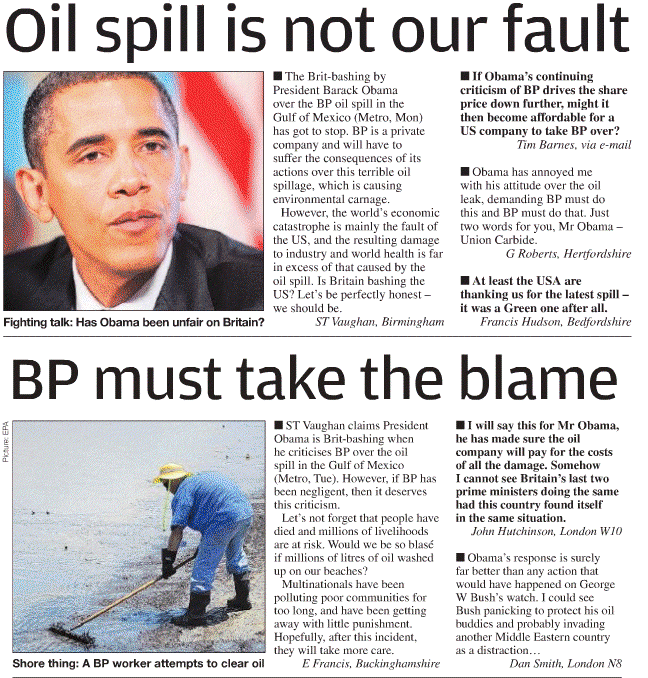
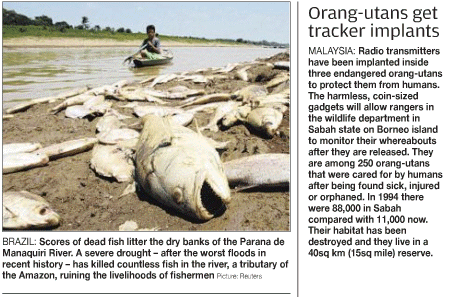
| Your correspondent Z Rewse-Davies supposes he has the facts. If he had seen Physicist Brian Cox on TV,he would have heard him explain that none of the current power sources, including nuclear fission can provide us with the power we need- that is a fact. Only fusion - the power of the sun has the potential to do that,and it is clean. Fission power is not - that is another fact. Replenishable power,such as wind and direct sunpower are not capable of generating the power we need,unless we cut back. In the long run,investment in fission is wasted money- that's another fact Mr Davies. |
|
 |
